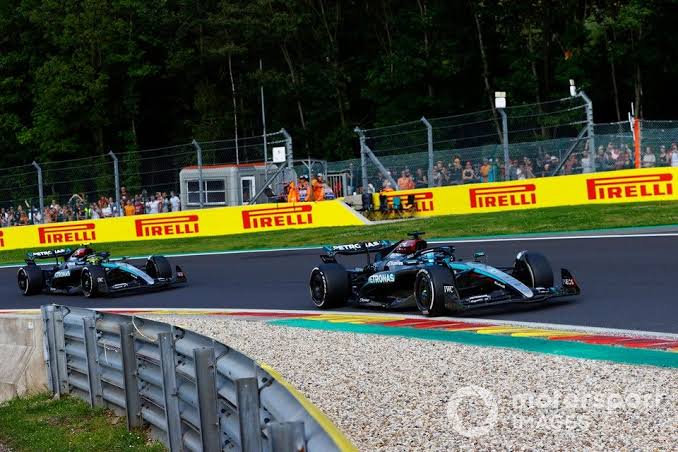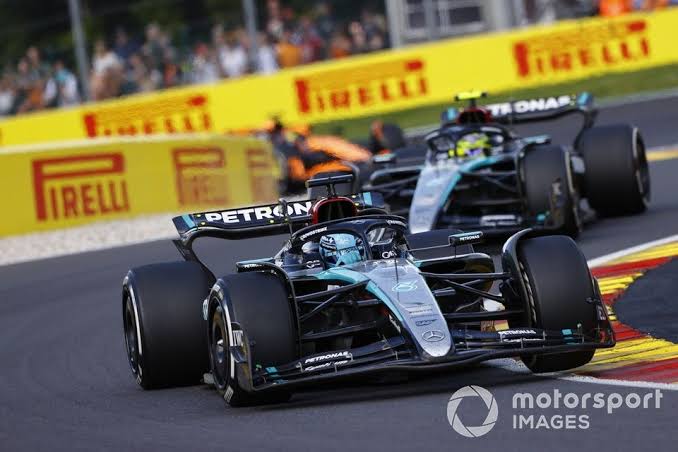Mercedes’ initial findings into the issue of George Russell’s disqualification from the Belgium Grand Prix, where he had initially claimed victory, revealed a critical problem with the car’s weight compliance.
The disqualification occurred because Russell’s car was found to be underweight after the race, which is a violation of the technical regulations.
Upon investigation, the team identified that the issue stemmed from an unintended removal of ballast. This ballast is a crucial component of the car’s weight distribution system, ensuring that the car meets the minimum weight requirements set by the regulations.
The ballast in question was inadvertently removed during a routine post-race check when the team was working to adjust various components of the car.
The removal happened due to an error in the pit lane during a planned adjustment procedure, where a part of the ballast system was dislodged and not replaced correctly.
This led to the car being significantly lighter than the required minimum weight when it was weighed for post-race scrutiny.
Mercedes also discovered that this problem was compounded by a failure to spot the discrepancy during pre-race checks.
The team’s standard procedures, including weight verification and ballast checks, did not catch the issue due to an oversight in their process, which missed the fact that the car was not in compliance with the weight regulations.
In response, Mercedes has since reinforced their internal procedures to ensure rigorous checks and balances are in place for weight compliance.
They have implemented additional measures for ballast security and accuracy in weight measurements to prevent similar issues in the future. The team remains committed to adhering to all technical regulations and ensuring that their cars are fully compliant in subsequent races.

